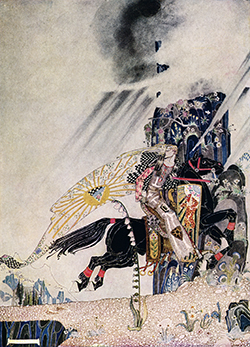I just read Kris Rusch’s most recent post about branding for authors and books. It’s excellent, and I’ve been thinking about the concepts all morning. I almost titled this post “What Is My Brand?” But that sounded overly superficial and doesn’t really convey what I mean.
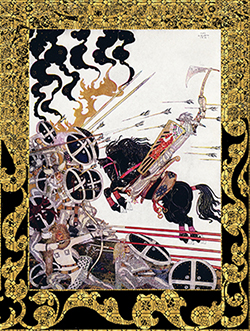 The superficial elements of branding are important, of course. But the reason they’re important is because they communicate (or fail to communicate) the essence of the item on offer, in this case the essence of the heart of my fiction.
The superficial elements of branding are important, of course. But the reason they’re important is because they communicate (or fail to communicate) the essence of the item on offer, in this case the essence of the heart of my fiction.
If I can communicate the essence of my stories accurately and with passion, then the readers who will most love them will know they’ve found the right book for them, when they stumble across one of mine.
(Speaking of which, I have an important question for those of you who do love my fiction. But more of that later. I’ll ask my question after I’ve done a brief exploration of the concepts behind branding. Back to Kris now.)
I gave some serious thought to the brand-building action steps that Kris presented and assigned as “homework.”
• Define the nature of what you offer
• Define who enjoys what you offer the most
• Determine if there are any related businesses and research their branding
• What is unique about what you offer?
• What is definitely not present in what you offer?
• Create a tagline for what you offer
I’m going to share my thoughts about these six steps, but before I dive in, I want to mention two of Kris’ related points that really struck home.
Kris said:
If you bring any of this marketing stuff into your writing—your storytelling, your creative process—you are screwing up big time. You’ll ruin the very thing your readers love about you.
Your readers love your ability to surprise them. Your readers love the fact that you take them on a journey that seems both familiar and unusual. If you do what you believe your readers want, you’ll retain the familiar and jettison the unusual. You will never be able to surprise them again.
You will ruin your art.
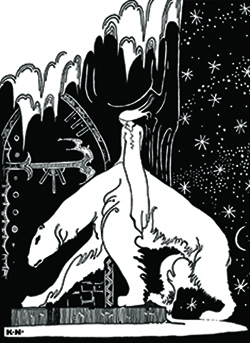 That really spoke to me. I’ve never tried to write to market. In all honesty, I doubt I could do it. All of my books have been books of the heart, books in which the characters and their challenges called to me so compellingly that I simply had to tell their stories.
That really spoke to me. I’ve never tried to write to market. In all honesty, I doubt I could do it. All of my books have been books of the heart, books in which the characters and their challenges called to me so compellingly that I simply had to tell their stories.
But there are many successful indies singing the siren song called Write to Market and Reach Success. I have not let this verse guide me, but I have allowed it to nip at my confidence. Kris’ words help me feel strong again in my conviction that I will write only books of the heart. 😀
Her other point:
The moment you publish your first piece, you’ve begun branding. Branding happens whether you do anything or not.
. . .
Brand image—the way that customers perceive your brand—begins the moment a customer (reader) reads something of yours. That customer will get an impression of what you do, and that impression can be reinforced with other work.
. . .
The readers, however, will define the specifics of your brand for you.
A brand, therefore, is a living creation, brought into being and modified by each story released, gaining particularity through the perceptions of those who engage with the things offered. In my case, my stories give birth to my brand. Each new story released alters my brand a little, but also strengthens it. And the perceptions of my readers define the specifics of my brand.
I can strengthen my brand, or weaken it, but I do not control it. And it becomes more and more a reality over years and years.
So… what about those six action steps? 😉
I decided to take my North-lands Stories through the six steps, although I must confess that I found myself sliding from the consideration of branding for my North-lands into branding for my whole oeuvre fairly quickly.
At the end, I concluded that my brand was something I’d been working on understanding for nearly all of the past four years (after I had a body of work created), that I would continue to work to understand it and communicate it for all of the foreseeable future, getting closer over time, and that one morning’s worth of thought (and note-taking) was just one small part of an ongoing process.
I wasn’t going to get it pinned down and right in one morning. And I’m okay with that. It takes some of the pressure off, for one thing. 😉
So here are some excerpts from what I came up with.
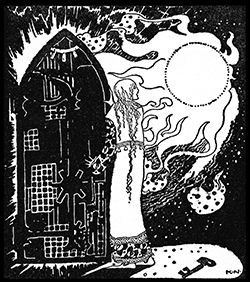 Kris gave examples all through her post, and I’m glad she did, because I need examples in order to learn well. I won’t repeat her specific examples for defining one’s offerings, but they were things along the lines of: “I write award-winning short mysteries” or “I write action & adventure set in feudal Japan.”
Kris gave examples all through her post, and I’m glad she did, because I need examples in order to learn well. I won’t repeat her specific examples for defining one’s offerings, but they were things along the lines of: “I write award-winning short mysteries” or “I write action & adventure set in feudal Japan.”
Mapping one example onto my North-lands gave me: “I write fantasy stories from the entire history of my North-lands.”
That’s accurate, although it won’t convey much to anyone who has not read any of my North-lands stories. Since this is an internal step, not something intended to go out into the world, I think that’s okay. But I did a little more thinking to explore (for myself) what I offer in my North-lands stories.
What if East of the Sun and West of the Moon were history, not folk tale? The world of my North-lands emerged from that history, with its own rich tradition of legend, adventure, and heroism. My North-lands stories chronicle the triumphs of one woman – or man, or child – struggling to make life-giving choices for herself (or himself) in difficult circumstances, and thus generating wonderful changes that ripple outward to shape an entire community or nation or culture.
I think I’m onto something with this. It will need more thought and refinement, but there’s the root of what I’m doing within that. 😀
I’ve received enough reviews over the past five years to generate a picture of the readers who love my work the most.
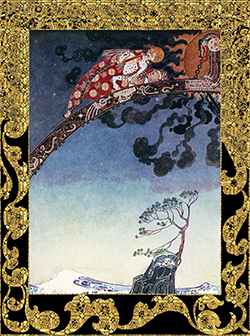 They seem to be a thoughtful bunch, intelligent and compelled to explore the depths of topics that interest them. A few read philosophy or theology. One was an English lit major. Some have suffered greatly, but not been broken by their suffering. They continue to live courageously, with hope for themselves and their loved ones.
They seem to be a thoughtful bunch, intelligent and compelled to explore the depths of topics that interest them. A few read philosophy or theology. One was an English lit major. Some have suffered greatly, but not been broken by their suffering. They continue to live courageously, with hope for themselves and their loved ones.
They are of all ages: teens, young adults just starting out in life, mature professionals at the height of their powers, and wise old grandfathers and grandmothers. But they all love a good story with heart and great characters, set in a world full of wonder mixed with verisimilitude.
Kris urged us to be very specific with this step.
In addition to pondering the details of my readers’ lives, I also thought about the other books they like to read, largely because Kris gave examples along those lines: people who loved the movie The Black Stallion or people who participate in re-enactments of ancient Roman life.
So… the people who love my books also love Beauty, Rose Daughter, Spindle’s End, Sunshine and Chalice by Robin McKinley.
The people who enjoy my books also enjoy The Sharing Knife, the World of Five Gods novels, and the Penric novellas by Lois McMaster Bujold; The Dark Is Rising by Susan Cooper; The Riddle-Master of Hed trilogy and The Forgotten Beasts of Eld by Patricia McKillip; and Charmed Life, Dogsbody, and Deep Secret by Diana Wynne Jones.
I drew a blank here.
Kris gave examples along the lines of a romance writer writing stories set the world of professional soccer researching the branding of Major League Soccer and allowing elements of that to shape and inform her own brand.
I’m not currently seeing anything like that for me and my fiction, although I’ll keep my eyes open.
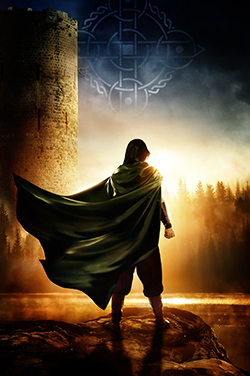 I did double down on my perception that successful books in my genre all have painterly cover art along with typography that plays a supporting role, that does not draw attention to itself, instead allowing the art to shine.
I did double down on my perception that successful books in my genre all have painterly cover art along with typography that plays a supporting role, that does not draw attention to itself, instead allowing the art to shine.
Most of my covers are not painterly enough, lacking the effects of spectacular light and shadow that they need to communicate the sense of wonder and mood that are such a part of my stories.
The cover for The Tally Master, created by the talented Milo at Deranged Doctor Design, is much closer to what I need and want.
I’m trying to express the magic of simply being alive and the hope inherent in being alive, without whitewashing either the difficulties or the mundanity that are part and parcel of living. Rather I want those difficult and dull elements to both heighten the sense of wonder in life and to be foundational to that wonder. So much of fantasy either omits them or polishes them beyond recognition. Mine celebrates them without becoming mired in them.
All Kris’ examples were along the lines of This but not That. “Star Wars, but with science, not fantasy.” “Crime investigators, but with real forensics, not that magic stuff in CSI.” And so on.
I write fantasy like Robin McKinley, but tell many stories in the same world, rather than just one or two. I write lyrical prose like Patricia McKillip, but with less purple and with a more natural cadence. I write fantasy with greater realism, like Lois Bujold, but with larger doses of the wonder that she tends to restrict to scenes like that in The Curse of Chalion, where Cazaril allows the goddess of spring to reach through him into the world. I write fantasy like Diana Wynne Jones, but with more world building and less handwavium.
Keep in mind that these ladies are my favorite authors and I merely aspire to touch the heights that they’ve reached. 😀
Kris mentions that her pen name, Kristine Grayson, had her stories tagged with “It’s not easy to get a fairytale ending.” Titan romance writer Debbie Macomber has been called “the official storyteller of Christmas.”
I first developed my own tagline when I started this website: “J.M. Ney-Grimm writes fantasy with a Norse twist.”
I liked that tagline, and kept it until I released Serpent’s Foe and Devouring Light. Those were “fantasy with a mythic twist.”
So I changed my website tagline to “J.M. Ney-Grimm writes fantasy with a twist.” But I suspect I need to re-think that. It’s not really conveying the sense of wonder and depth that my readers desire.
Fantasy braided with poetry, wonder, and heart
That’s not quite right either, but it’s moving in the right direction.
As I said above in this post, branding will always be a work in progress, although – honestly – I’m in the early learning stages at this point. I hope I’ll get much more skilled at it in future years.
 There’s one element that you could really help me with. Kris gives some great advice about involving one’s readers in figuring out what is unique to one’s own work. 😉
There’s one element that you could really help me with. Kris gives some great advice about involving one’s readers in figuring out what is unique to one’s own work. 😉
The more specific you get, the harder it will be for you to see what makes your work yours. So enlist the aid of others who love what you’re doing. They’ll tell you what makes your work special. Then you need to believe them, and run with that.
Here’s that question I promised above.
If any of you who love my fiction are reading this blog post, would you share your perceptions? What is it about my stories that you love? What is it that is unique? What is it that makes you wish I had more books out for you to read, because no one else quite hits the spot that a Ney-Grimm book hits?
I’d love to hear your thoughts on this.
Thank you! 😀

